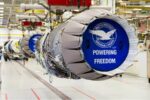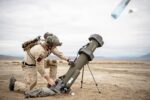In a show of strategic force and technological progress, North Korea revealed its most advanced intercontinental ballistic missile (ICBM) to date—the Hwasong-18—during a military parade in Pyongyang. The event marked a significant milestone in the Democratic People’s Republic of Korea’s (DPRK) long-range strike capabilities and nuclear deterrence posture.
Hwasong-18: A Leap Toward Solid-Fuel Strategic Strike Capability
The centerpiece of the July 27 military parade—the 70th anniversary of the Korean War armistice—was the Hwasong-18 solid-fuel ICBM. First flight-tested in April 2023 and again in July 2023, this missile represents a generational leap from earlier liquid-fueled designs such as the Hwasong-15 and Hwasong-17.
According to assessments by South Korean and U.S. intelligence agencies as well as open-source imagery analysis by organizations like CSIS and 38 North:
- Propulsion: The Hwasong-18 uses solid-propellant motors across all stages—a first for any North Korean ICBM.
- Mobility: Transporter Erector Launcher (TEL)-mounted system enhances survivability through rapid deployment.
- Range: Estimated intercontinental range exceeding 10,000 km; capable of targeting continental U.S.
- Payload: Likely MIRV-capable (multiple independently targetable reentry vehicles), though unconfirmed by test data.
The adoption of solid fuel drastically reduces launch preparation time—from hours to minutes—and complicates detection by foreign surveillance assets. This shift mirrors trends seen in Russian Topol-M or Chinese DF-41 development paths.
A Parade with Strategic Messaging
The July parade was not merely ceremonial—it was a calculated display aimed at both domestic audiences and international observers. Attended by Russian Defense Minister Sergei Shoigu and Chinese Politburo member Li Hongzhong, the event featured not only legacy systems but also emerging technologies such as UAVs resembling U.S.-made MQ-9 Reapers.
The presence of foreign dignitaries from key geopolitical allies suggests Pyongyang’s intent to signal alignment amid growing regional polarization. Moreover, showcasing the Hwasong-18 alongside other nuclear-capable platforms highlighted North Korea’s ambitions for credible second-strike capability and strategic deterrence against perceived threats from Washington and Seoul.
Technical Evolution from Liquid to Solid Propulsion
Historically reliant on Scud-based liquid propulsion systems adapted from Soviet-era designs, North Korea has struggled with mastering solid-fuel technology due to its complexity in propellant chemistry and motor casing fabrication. However, satellite imagery since late 2020 indicated construction of new facilities potentially linked to composite motor production.
The successful flight tests of Hwasong-18 suggest breakthroughs in several areas:
- Casting & Curing Techniques: Required for large-diameter solid motors with consistent burn rates.
- Nozzle Steering Mechanisms: Likely using thrust vector control for midcourse guidance corrections.
- TEL Development: Indigenous adaptation or import-modified chassis capable of supporting heavy ICBMs on rough terrain.
This technical evolution aligns with North Korea’s stated doctrine under Kim Jong Un’s leadership—to develop preemptive strike options that can survive first strikes while being rapidly deployable under duress or crisis conditions.
Nuclear Doctrine Implications
The operationalization of a road-mobile solid-fueled ICBM like the Hwasong-18 significantly alters Northeast Asia’s nuclear balance calculus. Unlike silo-based or fixed-launch systems that are vulnerable to preemptive strikes or ISR tracking, mobile solid-fueled missiles enhance survivability through concealment and mobility.
This capability supports DPRK’s declared shift toward “automatic” or “pre-delegated” retaliatory doctrines—wherein command-and-control may be decentralized under crisis scenarios to ensure retaliation even if leadership is degraded during conflict onset. While unverified publicly, such postures echo Cold War-era Soviet “dead hand” logic designed for deterrence through assured retaliation.
International Response and Strategic Concerns
The unveiling of the Hwasong-18 has drawn concern from regional actors including South Korea and Japan—as well as NATO-aligned nations monitoring proliferation risks. U.S. Indo-Pacific Command issued statements reaffirming extended deterrence commitments while enhancing allied missile defense readiness posture across Guam and Japan.
Tactically speaking, countering road-mobile ICBMs requires persistent ISR coverage—satellite constellations with high revisit rates (e.g., SAR satellites), airborne surveillance platforms like RQ-4 Global Hawk or E-8 JSTARS equivalents—and rapid-response strike assets capable of neutralizing TELs before launch sequence initiation.
This challenge is compounded by terrain masking within North Korean geography—mountainous regions allow for tunnel-based TEL concealment until final moments before launch window opens. Consequently, adversaries must invest heavily in left-of-launch capabilities including cyber disruption tools or kinetic prompt-strike options like hypersonic glide vehicles (HGVs).
Conclusion: A Strategic Inflection Point
The public debut of the Hwasong-18 marks more than just an engineering milestone—it reflects a doctrinal pivot toward survivable second-strike capability backed by increasingly sophisticated delivery platforms. While questions remain regarding warhead miniaturization reliability and reentry vehicle performance under real-world conditions, Pyongyang has clearly crossed a threshold into more credible ICBM territory.
This development will likely accelerate arms race dynamics in East Asia while complicating diplomatic efforts aimed at denuclearization or freeze agreements. For defense planners worldwide—from PACOM to NATO—the emergence of mobile solid-fueled ICBMs from non-peer states signals an urgent need to rethink early warning architectures and counterforce doctrines tailored for dispersed launch networks rather than fixed infrastructure alone.










